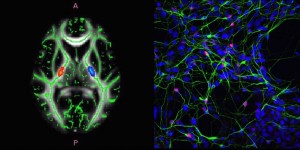New Genetics Clues into Motor Neuron Disease
Researchers at The University of Queensland have contributed to the discovery of three new genes which increase the risk of motor neuron disease (MND), opening the door for targeted treatments.
Professor Naomi Wray from UQ’s Queensland Brain Institute was involved in the data analysis as a part of an international study of more than 30,000 people.
“These three new genes open new opportunities for research to understand a complex and debilitating disease which currently has no effective treatments,” Professor Wray said.
“Crucially, we hope Australian patients will be included in the next phase of the study, thanks to funds raised by the Ice Bucket Challenge.”
“We’re very hopeful that in the next phase of discovery, as sample sizes with measured DNA increase, that we’ll discover more genes associated with MND.”
More than 1400 Australians have Motor Neuron Disease (also known as ALS). Nerve cells controlling the muscles that enable us to move, speak, breathe and swallow begin to degenerate and die, and the average life expectancy is two to three years.
For more than 90 per cent of patients the diagnosis comes out of the blue — in what’s known as sporadic MND.
This latest research has increased the number of genes associated with the sporadic form of motor neuron disease from one to four.
The Motor Neuron Disease Research Institute Australia has funded the next phase of the research — the establishment of the Sporadic ALS Australia (SALSA) consortium which has implemented identical data and DNA collection protocols in all the major MND clinics in Australia.
“The consortium paves the way for Australians with MND to join the international efforts in genetic discoveries as a step towards penetrating the complexity of this terrible disease,” Professor Wray said.
This study is published in Nature Genetics.
Resource Link: Oxford Motor Neuron Disease Centre

